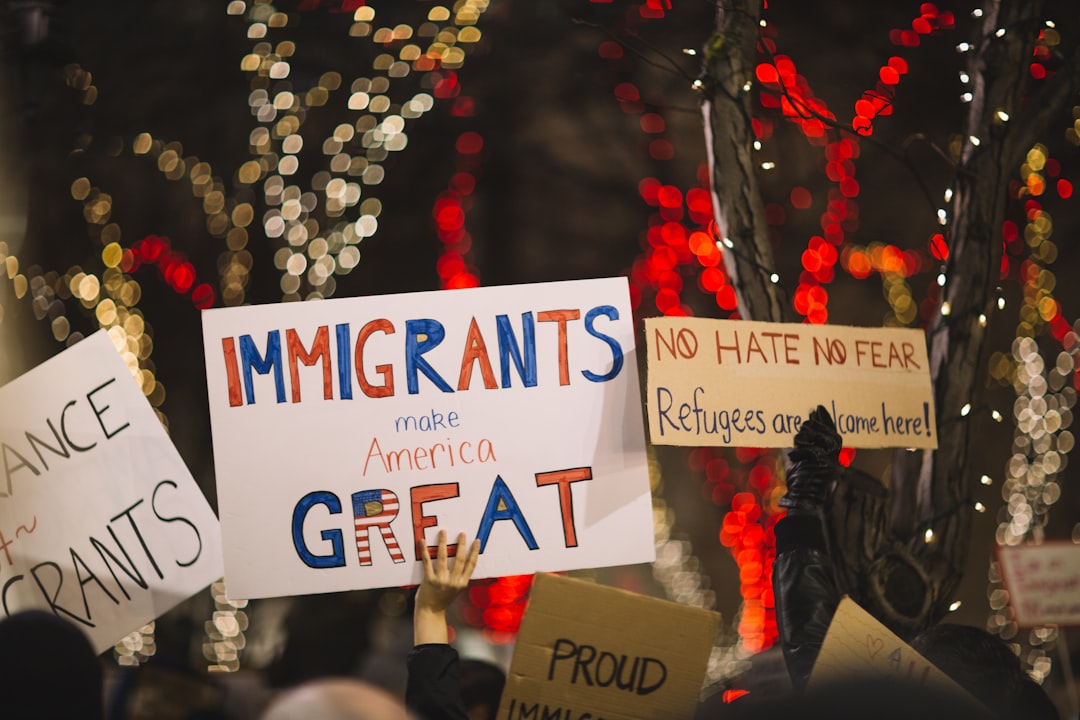Understanding Immigration: Trends, Impacts, and Perspectives
Introduction
Immigration, the movement of people across national boundaries with intentions of residing permanently or temporarily, shapes the social, economic, and political landscapes of nations worldwide. From the birth of ancient civilizations to the modern era of globalization, immigration has influenced demographics, labor markets, cultural identities, and international relations. Today, the topic carries immense relevance amid debates about border security, humanitarian crises, economic development, and multiculturalism.
Definition and Types of Immigration
Immigration broadly refers to the entry of individuals into a country other than their own for the purpose of settlement. Unlike emigration, which focuses on leaving one's country, immigration is seen from the receiving country's perspective.
Types of Immigration
| Type | Description |
|---|---|
| Voluntary Immigration | Moving by free choice, generally for economic or family reasons. |
| Forced Immigration | Movement due to conflict, persecution, or environmental disasters. |
| Labor Immigration | Entry for employment opportunities, either temporary or permanent. |
| Family Reunification | Migration to join family members already residing in a destination country. |
| Refugee/Asylum Seeker | Individuals fleeing conflict or persecution seeking international protection. |
Historical Context
Throughout history, human migration has caused the diffusion of cultures, ideas, innovations, and religious beliefs.
- Early Migrations: The peopling of continents by Homo sapiens and the spread of agriculture relied on migration.
- Modern Era: Colonization, transatlantic slave trade, and mass European emigration in the 19th and 20th centuries reshaped world demographics.
- Recent Trends: The post-World War II era saw massive refugee flows, decolonization migrations, and the creation of migration policies by sovereign states.
Current Global Trends
Globally, immigration patterns are shaped by economics, geopolitics, climate change, and technology.
Top 10 Countries by Number of Immigrants (2020, UN Data)
| Rank | Country | Immigrant Population (millions) |
|---|---|---|
| 1 | USA | 51.0 |
| 2 | Germany | 16.0 |
| 3 | Saudi Arabia | 13.5 |
| 4 | Russia | 11.6 |
| 5 | UK | 9.4 |
| 6 | UAE | 8.7 |
| 7 | France | 8.5 |
| 8 | Canada | 8.0 |
| 9 | Australia | 7.7 |
| 10 | Spain | 6.8 |
Regional Patterns
- North America and Western Europe: Major destinations for skilled migration and refugees.
- Middle East: High proportions of labor migrants (e.g., Gulf countries).
- Sub-Saharan Africa, South Asia: Major source regions due to economic disparities and conflict.
Economic Impacts of Immigration
Benefits
- Labor Market Contributions: Immigrants often fill labor shortages, drive entrepreneurship, and increase economic output.
- Demographic Renewal: In countries with aging populations (e.g., Japan, Germany), immigration helps sustain workforce and public pension systems.
- Innovation: Immigrants are overrepresented in patent filings and high-tech sectors.
Challenges
- Pressure on Public Services: Sudden influxes may strain housing, education, and health systems if unprepared.
- Wage Effects: In some circumstances, low-skilled immigration can affect the earnings of vulnerable native workers.
Economic Impact Summary Table
| Area | Positive Impact | Potential Challenge |
|---|---|---|
| Labor Market | Fills skill/labor shortages | Short-term competition for jobs |
| Fiscal | Tax contributions | Short-term pressure on welfare |
| Innovation | More entrepreneurship/patents | Adjustment costs for local firms |
Social and Cultural Effects
Immigration contributes to:
- Cultural Diversity: Enriches food, music, art, and language in host societies.
- Social Integration: Successful integration policies foster social cohesion but require investment.
- Identity Debates: Immigration may revive questions about national identity, citizenship, and multiculturalism.
Policy Approaches
Common Policy Tools
| Tool | Purpose | Examples |
|---|---|---|
| Points-based Systems | Select immigrants based on skills/attributes | Canada, Australia |
| Quotas | Limit numbers by country/work type | U.S. diversity lottery, EU Blue Card |
| Family Reunification | Allow families to reunite | U.S. Family-sponsored Visa |
| Humanitarian Admission | Accept refugees/asylees | UNHCR Resettlement |
| Border Enforcement | Prevent unauthorized entry | Fencing, patrols, surveillance |
Notable Challenges
- Irregular Migration: Causes include conflict, poverty, and restrictive legal pathways.
- Integration: Overcoming language barriers, discrimination, and ensuring equal opportunity.
- Human Trafficking: Organized exploitation of vulnerable populations during migratory journeys.
Immigration and Public Opinion
Public attitudes vary by economic conditions, societal values, and recent events. Political discourse around immigration shapes electoral outcomes and policy reforms.
| Factor Influencing Public Opinion | Example |
|---|---|
| Economic Outlook | Recession may fuel anti-immigrant sentiments |
| Security Concerns | Terror attacks sometimes linked (often unfairly) |
| Cultural Factors | Worries about national identity, assimilation |
Case Study: The United States
The U.S. is a nation historically built by immigrants.
- Legal Pathways: Employment-based, family reunification, refugee/asylum.
- Undocumented Population: Estimated ~11 million people; subject of ongoing political debate.
- Recent Developments: Shifting court rulings, border crises, and DACA (Deferred Action for Childhood Arrivals).
The Future of Immigration
Looking ahead, migration flows will likely intensify due to technology, climate change, regional instability, and ongoing economic imbalances. International cooperation will be crucial to manage flows safely, humanely, and to maximize shared benefits.
Conclusion
Immigration is a powerful force, shaping societies for both opportunity and challenge. Well-managed immigration policies, effective integration efforts, and international cooperation can maximize benefits—economic, social, and cultural—while minimizing tensions and vulnerabilities. An informed, balanced dialogue remains essential in an interdependent, mobile world.
References
- United Nations Department of Economic and Social Affairs (UN DESA), International Migration Report
- OECD International Migration Outlook
- Migration Policy Institute (MPI)
- Pew Research Center: Immigration in America
Table Legend and Notes:
Figures are current as of 2020 where possible; data sources include the UN and OECD. For detailed policy or demographic analysis beyond these summaries, readers should consult the referenced organizations’ latest reports.
